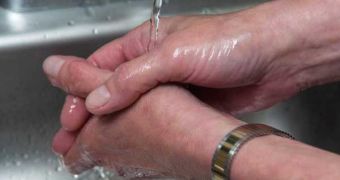University of Colorado scientists have recently discovered that women carry much more diverse bacteria species on their hands than men, and also larger numbers of them altogether, although they reported washing their hands often. Men exhibited less species and less diversity. A bizarre application for this discovery could be the replacement of fingerprinting with “bacterial-printing”, by analyzing the unique bacteria people leave behind after they touch an object.
UC researchers, led by Noah Fierer, took samples of skin from 51 undergraduates at the University, and sequenced the bacteria on them, using a technique called pyrosequencing. They discovered that each student, no matter the gender, had an average of 3,200 bacteria on their hands, coming from some 150 different species. The team was puzzled by the results, as they prove that bacterial diversity is 100-fold higher than previously estimated.
However, the impressive number of bacteria doesn't mean that they appear on all hands. On the contrary, the scientists discovered that only five species were common to all test subjects. Compared to the diversity on their hands, this number is infinitely small. Even the same person’s hands don't have too many bacteria in common. Only 17 percent of species were found on both hands. Researchers believe that this has something to do with the dominant hand.
Water decreased the number of bacteria, but the cultures recovered soon, although women mostly washed their hands often. Fierrer said that factors such as pH, hormone levels, skin acidity, perspiration, sebum amounts, and even cosmetics usage could explain this occurrence. "We were pretty surprised to see such clear differences between men and women. We don't know the causes," he added.
On the bright side, experts say that the fact certain individuals grow only specific types of bacteria could mean that regular fingerprinting could be replaced with a more advanced technique, analyzing the bacteria left behind when someone touches something. Though it may take a while until this method is widely implemented, it could prove useful for analyzing a crime scene, even after a long period of time, when fingerprints fade away.

 14 DAY TRIAL //
14 DAY TRIAL //